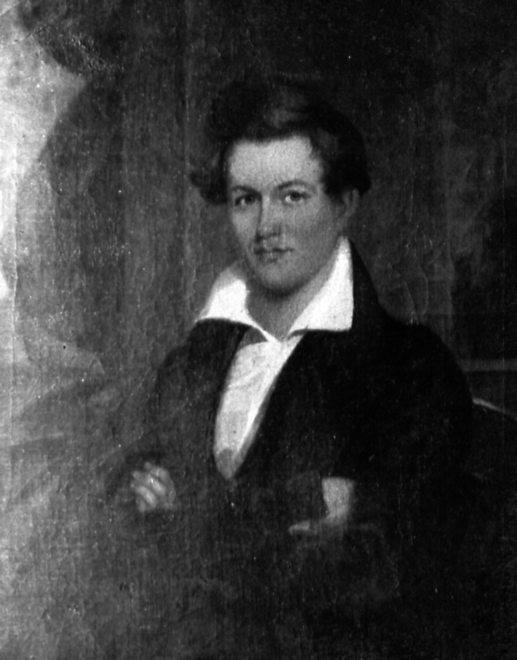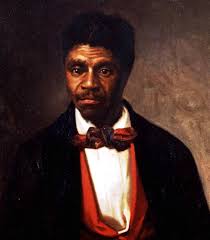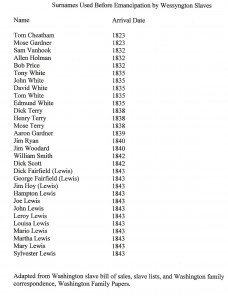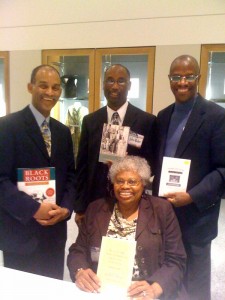Archive for the ‘Introduction & Personal’ Category
Thursday, March 4th, 2010
The Washingtons of Wessyngton Plantation reviewed in Nashville City Paper by Todd Dills. Click here to see review.
Tags:African American History, Ann Nixon Cooper, black history, Black History Month, family history, family tree, Genealogy & DNA, Nashville Tennessee, plantation slavery, Roots, Tennessee history, Tennessee slavery, Washington family, Wessyngton Plantation, Who Do You Think You Are
Posted in Book Tour & Reviews, Civil War, Current Events, Genealogy & DNA, Interviews, Introduction & Personal, Plantation Life | Comments Closed
Sunday, January 31st, 2010
“Michelle and I wish to express our deepest condolences on the passing of Mrs. Ann Nixon Cooper. From her beginnings in Shelbyville and Nashville, Tennessee to her many years as a pillar of the Atlanta community, Ann lived a life of service. Whether it was helping to found the Girls Club for African American Youth, serving on the board of directors for the Gate City Nursery, working as a tutor at Ebenezer Baptist Church or registering voters, Ann had a broad and lasting impact on her community. I also understand that as a wife, mother and grandmother, Ann was a source of strength for her entire family, and that she always put them first.
Over the course of her extraordinary 107 years, Ann saw both the brightest lights of our nation’s history and some of its darkest hours as well. It is especially meaningful for me that she lived to cast a vote on Election Day 2008, and it was a deep honor for me to mark her life in the speech I delivered that night. It was a life that captured the spirit of community and change and progress that is at the heart of the American experience; a life that inspired – and will continue to inspire – me in the years to come. During this time of sadness, Michelle and I offer our deepest condolences to all who loved Ann Nixon Cooper. But even as we mourn her loss, we will also be rejoicing in all that she meant for her family, her community, and so many Americans.”
Tags:A Century and Some Change, Ann Nixon Cooper, Atlanta Georgia, Barack Obama, Cooper Family, Michelle Obama, My Life Before the President Called My Name, Nixon Family, President Obama, Washington family, Wessyngton Plantation, Yes We Can
Posted in Current Events, Introduction & Personal | Comments Closed
Saturday, December 26th, 2009

The history of the Alamo is an important part of American history and American lore. Joseph George Washington was a participant in the defense of the Alamo.
Joseph was the son of Andrew Washington, brother of Joseph Washington, who founded Wessyngton Plantation. He was born in 1808 and lived in Robertson County, Tennessee. Joseph was described as a striking, tall figure, about six feet high, tolerably stout build, tolerably dark complexion, dark eyes and dark hair.
In 1833, Joseph George sold his uncle a slave Joe. In December of 1835, he sold three more slaves to his brother Richard Washington for $830, before he travelled west to Texas. We do not know why Joseph joined in the fight for the Alamo. It could have been that the Republic of Texas offered land to men who helped win its independence from Mexico. Another reason could have been he was seeking an adventure as he went with other young men from Tennessee and nearby Kentucky.
In 1836, during the 12 day siege by Mexican troops under the command of Santa Anna, Joseph George Washington was killed. Within the Washington family and Alamo lore he became known as “Alamo Joe.”
Tags:Alamo, Alamo Joe, Andrew Washington, Battle of the Alamo, Davy Crockett, Joseph George Washington, Joseph Washington, Mexico, Republic of Texas, Richard Washington, San Antonio, Santa Anna
Posted in Current Events, Genealogy & DNA, Interviews, Introduction & Personal, Plantation Life, Research | Comments Closed
Tuesday, December 22nd, 2009

I was deeply saddened upon learning that my dear friend Mrs. Ann Nixon Cooper had passed away at her home on Monday evening.
I first became acquainted with Mrs. Cooper in 1996, when she was 94 years young through my genealogical research on Wessyngton Plantation, which she also had family ties to.
Mrs. Cooper was a very beautiful person and I treasured our friendship over the years. She was always very loving and kind when I visited her and also very helpful in providing me with information.
Mrs. Cooper lived a very long, productive and interesting life. I loved to listen to stories about her childhood in Tennessee and her adult life in Atlanta. She was so sharp it was hard to believe that she was more than 100 years old.
Mrs. Cooper became known worldwide last year when CNN television news chronicled her voting early for then Senator Barack Obama.
Although Mrs. Cooper became well known for voting for President Obama, she led a very interesting life before then which is told in her forthcoming book A Century and Some Change: My Life Before the President Called My Name.
I will truly miss my dear friend.
With Love,
John
Tags:A Century and Some Change, Ann Nixon Cooper, Atlanta Georgia, Barack Obama, CNN News, Don Lemon, Huffington Post, John Baker, Karen Grisby Bates, Michelle Obama, My Life Before the President Called My Name, New York Times, President Obama, Washington family, Washington Post, Wessyngton Plantation, Yes We Can
Posted in Civil War, Current Events, Genealogy & DNA, Interviews, Introduction & Personal, Plantation Life, Research | Comments Closed
Monday, December 21st, 2009

In 1831, Nat Turner led the largest slave rebellion in the history of the United States. Turner, born in 1800 in Jerusalem, Southampton County, Virginia. Wessyngton Plantation’s founder Joseph Washington lived in Southampton County before he came to Tennessee. Many of the slaves on Wessyngton Plantation were brought by Joseph to Tennessee.
In Virginia, Turner, a self-proclaimed Baptist minister, was known as “The Prophet” to the enslaved African Americans and often conducted services for them. He claimed to be given visions by God, and that he was ordained to lead his people to freedom. Unlike most slaves and many whites, Turner was able to read and write.
Turner’s group of followers was composed of more than 50 fellow slaves and free blacks. During the insurrection of 1831, the group went through the countryside of Southampton County killing 55 men, women, and children. The insurrection lasted for two days before the local militia put it down. Turner and several of the leaders were executed; others were transported out of the area.
The Turner rebellion put fear in the hearts and minds of slave holders throughout the South, which led to laws further restricting the activities of enslaved African Americans and free blacks.
The revolt influenced the Tennessee legislature to pass laws in 1831 that prevented more free blacks from entering the state. Any person emancipating a slave had to send him out of the state. When the new constitution in Tennessee was written in 1834, free blacks were denied voting privileges.
Tags:Insurrection, Jerusalem, Nat Turner, Plantation Rebels, plantation slavery, Rebel Slaves, slave rebellion, Slave Revolt, slave trade, Southampton County Virginia, United States slavery, Virginia, Virginia Slavery
Posted in Civil War, Genealogy & DNA, Interviews, Introduction & Personal, Plantation Life, Research | Comments Closed
Monday, November 30th, 2009

5th Grade Class at Gateview Elementary in Portland, TN
On November 20th I had the honor of delivering a presentation about my book The Washingtons of Wessyngton Plantation to the entire fifth grade class at Gateview Elementary School in Portland, Tennessee. More than 100 students attended. Prior to my visit the students had studied the Civil War, which tied into my program. The students were very attentive and had many questions. Following the presentation many of the students expressed an interest in tracing their genealogy.
Tags:Civil War, Gateview Elementary School, Genealogy & DNA, history, Portland Tennessee, Tennessee history
Posted in Book Tour & Reviews, Civil War, Current Events, Genealogy & DNA, Interviews, Introduction & Personal, Plantation Life, Research | Comments Closed
Tuesday, November 24th, 2009

In 1847 an enslaved African American, Dred Scott, went to trial to sue for his freedom. This case, which later became known as Dred Scott v. Sanford, impacted the citizenship of all African Americans throughout the United States.
Dred Scott was born a slave in Southampton County, Virginia and was owned by Peter Blow. Peter Blow was the great-nephew of Colonel Michael Blow who owned my ancestors before they were brought to Wessyngton Plantation by Joseph Washington.
Scott was taken to Alabama by the Blow family and later to St. Louis. After Peter Blow’s death in 1832, Scott was bought by an army surgeon Dr. John Emerson who took him to Illinois and the Wisconsin Territory.
Scott’s stay in Illinois and Wisconsin, where slavery was prohibited, gave him the legal standing to make a claim for his freedom. The abolitionists encouraged him to sue for his freedom. The case and appeals took ten years. In March 1857, the United States Supreme Court declared that all blacks, slaves as well as free blacks, were not, and could never become, citizens of the United States.
The decision was a victory for southern slaveholders, while northerners were outraged at its outcome. The Dred Scott case influenced the nomination of Abraham Lincoln to the Republican Party and his election that led to the South’s secession from the Union and ultimately the freedom of all African Americans.
Peter Blow’s sons, who had grown up with Dred Scott, helped him pay the legal fees for his lengthy case. After the Supreme Court’s decision, they purchased Scott and his wife and then emancipated them.
Dred Scott died nine months later—a free man.
.
Tags:Abraham Lincoln, Blow Family, Civil War, Confederate States, Declaration of Independence, Dr. John Emerson, Dred Scott, Dred Scott Decision, Frederick Douglass, Free Territory, Joseph Washington, Michael Blow, Missouri Compromise, Peter Blow, Runaway Slave Law, Scott vs. Sanford, Slave Laws, Southampton County Virginia, St. Louis, Supreme Court, Union Army
Posted in Civil War, Current Events, Genealogy & DNA, Interviews, Introduction & Personal, Plantation Life, Research | Comments Closed
Tuesday, November 17th, 2009

On Tuesday November 4, 2008, President Barack Obama reflected on the life of Mrs. Ann Nixon Cooper: “she’s seen throughout her century in America─the heartache and the hope; the struggle and the progress; the times we were told we can’t; and the people who pressed on with that American creed: Yes, we can.”
Empowered and energized by this history-making presidential campaign, Mrs. Cooper told her story in her own voice. A Century and Some Change is the portrait of an American who lived a rewarding and culturally rich life.
Mrs. Cooper was raised in Nashville in the home of her aunt-in-law Joyce Washington Nixon, who was born a slave at Wessyngton Plantation during the last days of the Civil War. I had the honor of interviewing Mrs. Cooper and recording her memories in my book The Washingtons of Wessyngton Plantation, which she mentioned in her book.
A Century and Some Change: My Life Before the President Called My Name will be released on January 5, 2010 by Atria Books, a division of Simon & Schuster. Mrs. Cooper passed away on December 21st at her home, nineteen days short of her 108th birthday.
Order A Century and Some Change by clicking the icon of her book cover
Tags:A Century and Some Change, Acceptance Speech, Al Cooper, Albert Berry Cooper II, Allen Berry, Andrew Young, Ann Nixon Cooper, Atlanta Georgia, Atria, Atria Books, Barack Obama, Before the President Called My Name, Berry Family, Bessie Dozier, Book: A Century and Some Change, CNN, Cooper Family, Coretta Scott King, Don Lemon, Elmwood, First Lady Obama, Frank Berry, George Washington, Granville Washington, Irene Nixon, Irene Washington, James Dozier, Jerry Nixon, John Baker Jr., Joyce Cooper Bobo, Joyce Washington Nixon, Karen Grigsby Bates, Martin Luther King Jr., Meharry, Michelle Obama, Nashville Tennessee, Nixon Family, Obama family, President Barack Obama, President Obama, President Washington, Presidential campaign, Presidential Election, Simon & Schuster, Stories of My Family's Journey to Freedom, W. W. Berry, Washington family, Washingtons of Wessyngton Plantation, Wessyngton Plantation, Yes We Can
Posted in Book Tour & Reviews, Civil War, Current Events, Interviews, Introduction & Personal, Plantation Life, Research | Comments Closed
Tuesday, November 10th, 2009

Surnames of Wessyngton Slaves
Slaves were usually known by their first names, especially on small farms with few slaves. Plantation owners rarely recorded their slaves with surnames unless they had several individuals with the same first names. For that reason the use of surnames by slaves was far more common on large plantations where more people were likely to have the same given names.
Due to Wessyngton Plantation having such a large enslaved population many African Americans are listed with their previous owners’ surnames as early as the 1820s.
Slave bills of sale and other documents in the Washington Family Papers collection details the origins of many of these African American families.
The list above documents the names African Americans on Wessyngton Plantation who used surnames prior to emancipation and the date of their arrival on the plantation.
Tags:African American History, African American Surnames, African Slavery, Day Names, Given Names, Naming Patterns, Naming Practices, Plantation Records, plantation slavery, Slave Bills of Sale, Slave Names, Slave Surnames, slave trade, Tennessee slavery, United States slavery, Virginia Slavery
Posted in Civil War, Current Events, Genealogy & DNA, Interviews, Introduction & Personal, Plantation Life, Research | Comments Closed
Sunday, November 8th, 2009

Meet the Authors event, International Black Genealogy Summit
I just returned from a very exciting event—The first International Black Genealogy Summit held in Ft. Wayne, Indiana on October 29-31, 2009. Several hundred people participated. Throughout the conference I shared my research experience with genealogists. It was wonderful to speak with many people who had already read my book. The give and take of ideas illustrates that we are just at the beginning of a long and interesting journey to learn about our roots.
At the Meet the Authors event everyone could talk to the authors of books related to African American genealogy. The authors posed together for this photo. (L-R) Tony Burroughs who wrote Black Roots: A Beginners Guide To Tracing the African American Family Tree; myself; Tim Pinnick, author of Finding and Using African American Newspapers; and (Seated) Frazine Taylor, with her book Researching African American Genealogy in Alabama.
Tags:African American Genealogy, African American Newspapers, Alabama Genealogy, Black Roots, DNA Testing, family history, family research, family tree, Frazine Taylor, Genealogical Research, Genealogy and DNA, International Black Genealogy Summit, Tim Pinnick, Tony Burroughs
Posted in Book Tour & Reviews, Current Events, Genealogy & DNA, Interviews, Introduction & Personal, Plantation Life, Research | Comments Closed







